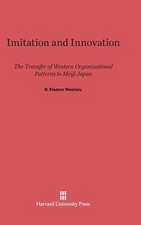Methods for Applied Macroeconomic Research
Autor Fabio Canovaen Limba Engleză Hardback – 22 feb 2007
"The last twenty years have witnessed a revolution in macroeconomic modeling. Yet an integrated and accessible treatment of the new methods has been notably lacking. Fabio Canova's book fills that gap magnificently. It is surely destined to be an indispensable reference for both students and researchers for years to come."--Charles Bean, Bank of England
"This book will become an invaluable reference for applied macroeconomists as well as a much-needed teaching tool for graduate macroeconomic courses. Anybody who has an interest in quantitative macroeconomics, either as an academic or as a practitioner, should buy it."--Lucrezia Reichlin, European Central Bank
"Dynamic general equilibrium models have become regular tools for policy analysis in central banks and other policy institutions. This book is a wonderful source for those who want to bring those models to the data. It is thorough and comprehensive, it has a great set of examples and exercises, and, above all, it provides many practical tips. A must-read for any applied macroeconomist."--Frank Smets, European Central Bank
"To be able to describe and interpret business-cycle fluctuations using modern methods developed by researchers is crucial to economists who want to make and evaluate forecasts and policy advice. Fabio Canova has a long experience from research at the frontier, but also from teaching and from applied work at policy institutions such as central banks. His book provides an indispensable toolbox for any researcher that wants to have an influence on practical policy work."--Anders Vredin, Sveriges Riksbank
"The material covered in this book is extensive, and the author always strives to provide an in-depth analysis and discussion for every topic, complete with the most up-to-date developments in the literature. The combination of DSGE macroeconomics and econometrics makes this book a unique product, likely to become an essential reference for empirical macroeconomists and policymakers."--Marco Del Negro, FRB Atlanta
"This book is unprecedented among econometrics books for the way it incorporates careful and sophisticated macroeconomic theory. It is unprecedented among books on dynamic macroeconomics for its level of practical statistical advice and econometric sophistication. There is simply nothing close to this book available. Many of the best young researchers will want to study and teach from it."--Thomas J. Sargent, New York University
"This book treats econometric, computational, and macroeconomic substantive issues jointly. Nearly all existing books in this area are either strictly econometric, strictly computational, or focus on substance without taking up econometric and computational issues. The need for a treatment like this on the part of applied researchers means there will be wide interest in it."--Christopher Sims, Princeton University
Preț: 643.94 lei
Preț vechi: 794.99 lei
-19% Nou
123.24€ • 128.01$ • 102.37£
Carte tipărită la comandă
Livrare economică 03-17 februarie 25
Specificații
ISBN-10: 0691115044
Pagini: 512
Ilustrații: 50 line illus.
Dimensiuni: 153 x 264 x 37 mm
Greutate: 0.83 kg
Editura: Princeton University Press
Locul publicării:Princeton, United States
Descriere
The last twenty years have witnessed tremendous advances in the mathematical, statistical, and computational tools available to applied macroeconomists. This rapidly evolving field has redefined how researchers test models and validate theories. Yet until now there has been no textbook that unites the latest methods and bridges the divide between theoretical and applied work. Fabio Canova brings together dynamic equilibrium theory, data analysis, and advanced econometric and computational methods to provide the first comprehensive set of techniques for use by academic economists as well as professional macroeconomists in banking and finance, industry, and government. This graduate-level textbook is for readers knowledgeable in modern macroeconomic theory, econometrics, and computational programming using RATS, MATLAB, or Gauss. Inevitably a modern treatment of such a complex topic requires a quantitative perspective, a solid dynamic theory background, and the development of empirical and numerical methods--which is where Canova's book differs from typical graduate textbooks in macroeconomics and econometrics. Rather than list a series of estimators and their properties, Canova starts from a class of DSGE models, finds an approximate linear representation for the decision rules, and describes methods needed to estimate their parameters, examining their fit to the data. The book is complete with numerous examples and exercises. Today's economic analysts need a strong foundation in both theory and application. Methods for Applied Macroeconomic Research offers the essential tools for the next generation of macroeconomists.

















